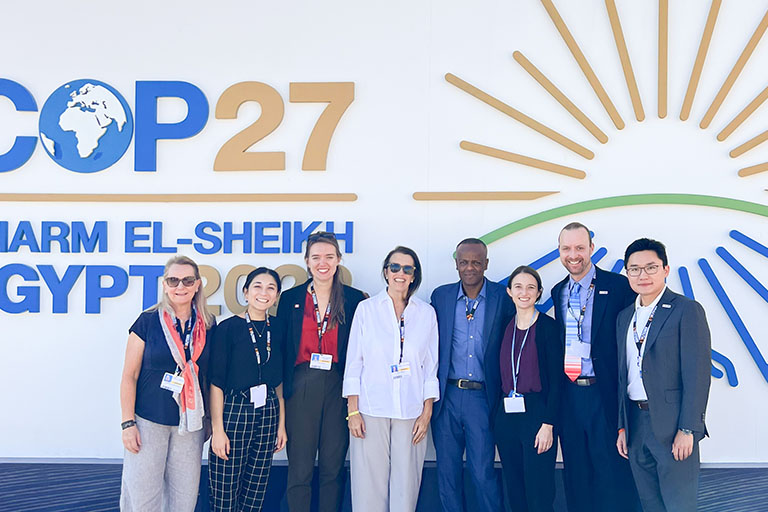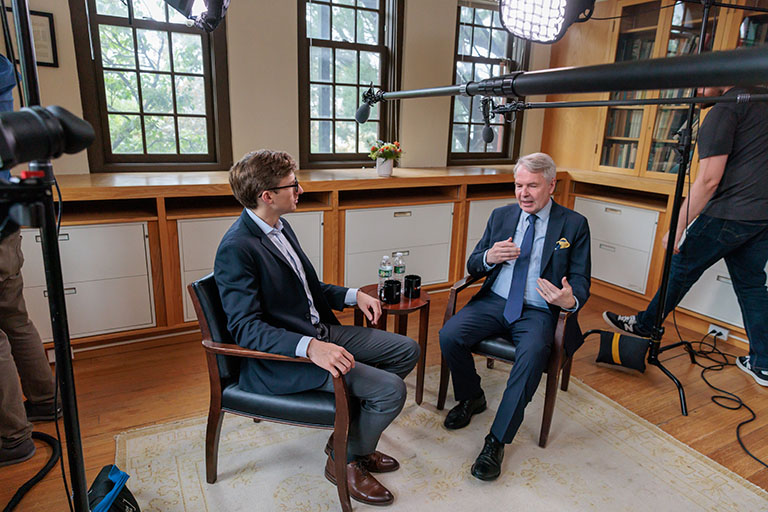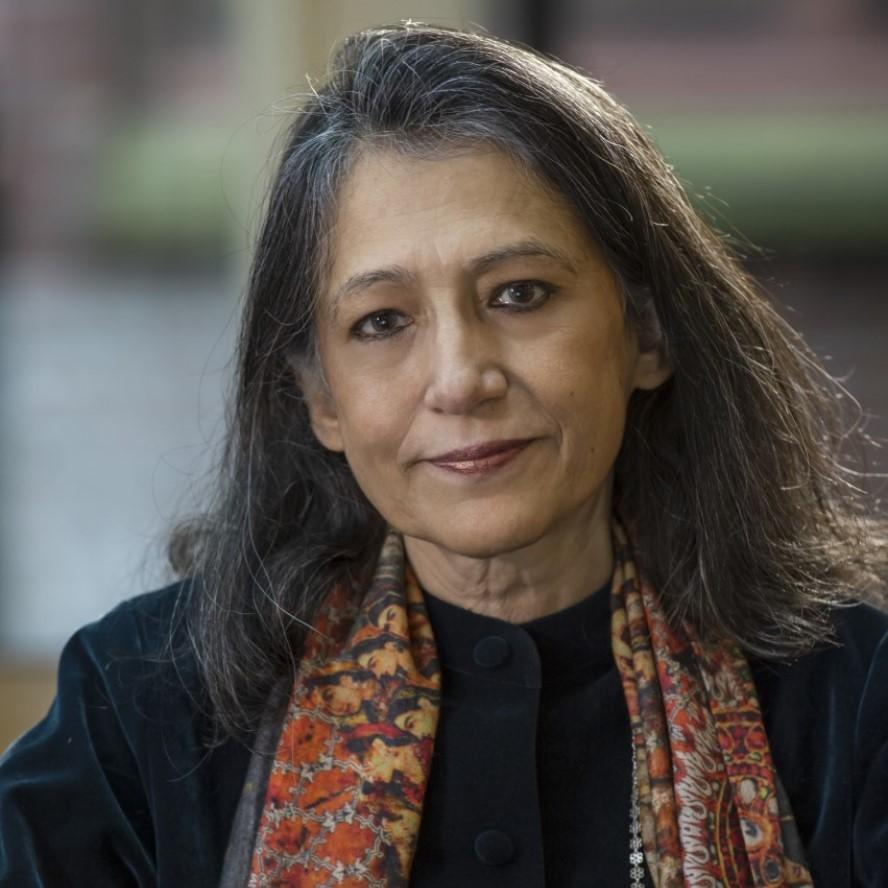-

Hear from Professor Monica Toft
Learn how Professor Monica Toft is shaping the study of global affairs and diplomacy at Fletcher.
Hear from Prof. Toft -

Explore Fletcher academics in action
Fletcher Features offers insights, innovation, stories and expertise by scholars.
Get global insights -
Get application tips right from the source
Learn tips, tricks, and behind-the-scenes insights on applying to Fletcher from our admissions counselors.
Hear from Admissions -

Research that the world is talking about
Stay up to date on the latest research, innovation, and thought leadership from our newsroom.
Stay informed -
Meet Fletcherites and their stories
Get to know our vibrant community through news stories highlighting faculty, students, and alumni.
Meet Fletcherites -

Forge your future after Fletcher
Watch to see how Fletcher prepares global thinkers for success across industries.
See the impact -

Global insights and expertise, on demand.
Need a global affairs expert for a timely and insightful take? Fletcher faculty are available for media inquiries.
Get in Touch
The 75th Anniversary of South Asian Independence
Reflections from Ayesha Jalal, Mary Richardson Professor of History and Director, Center for South Asian and Indian Ocean Studies

Commemorative events such as the 75th anniversary of independence and partition in South Asia are not just occasions to revel and rejoice with symbolic displays of national hubris and rhetorical fanfare. For scholars and students of history and international relations, they are a time for mature reflection and informed discussion on what is happening around us, locally, regionally and globally, with a view to understanding how the past informs everyday life and practices.
So although skeptics may carp and complain about the tedium of officially orchestrated remembrances, staged ceremonials are potential catalysts for critical assessments of the present, seen and experienced through the revealing lens of the near and distant past.
There are urgent reasons to take off the rose-tinted gloss on independence from British rule to account for the lingering shadow of darkness cast by India’s partition on the post-colonial states and societies of South Asia. The British raj came to its cataclysmic end amid a frenzy of arson, loot, murder and rape in the name of religion. An estimated fourteen and a half million people stumbled fearfully across the newly demarcated frontiers of India and Pakistan, and as many as two million innocent men, women and children perished.
Freedom from servitude extracted too high a price, leaving many questions unanswered. Now that they were masters of their own homes, what would the people of the subcontinent aspire for and who would they hail and villainize in their nationalist pantheon? Partition may have divided lives and drawn lines of blood in the hearts and minds of people. But the arbitrary lines drawn by an act of British cartography were not visible to anyone’s eye. Some things could never be divided, like the common historical and cultural heritage of the subcontinent, not to mention the bonds of friendship that persevered through political strife couched in religious terms.
As the Urdu short story writer Saadat Hasan Manto put it, the pity of partition was not that instead of one country there were now two—independent India and independent Pakistan—but that “human beings in both countries were slaves, slaves of bigotry . . . slaves of religious passions, slaves of animal instincts and barbarity.”
The paradoxes of freedom from colonial rule in the subcontinent have mutated over the past seven and a half decades into frightening and bewildering permutations and combinations. Partition may have become a distant memory for many and its invocations in public discourse limited to scoring points on the grid of patriotism. But its absent presences in everyday life across the great divide of 1947 are indicators of its historical significance not merely as an event that occurred seventy-five years ago but a process that is very much part of the present.
An ongoing process with neither end nor beginning, partition structures the post-colonial South Asian experience. An institutionalized form of dividing and disconnecting, partition has been the founding myth of post-colonial nation-states, ferreting out people, communities, and linguistic cultures that were once historically indivisible. If there are multiple slippages, elisions, and contestations in narratives about the great divide that occurred in 1947, there are strange silences over its daily reenactments in the post-colonial nation-states of South Asia.
There is an unfortunate tendency to associate India with independence and Pakistan and Bangladesh with partition. Mohammad Ali Jinnah, the founding father of Pakistan, worked tirelessly throughout his career for the independence of the subcontinent from the British yoke. His primary aim was to win power for Indians – Hindus and Muslims alike – at an all-India center by forcing the departure of the colonial masters. Partition came about because of the Indian National Congress’s inability to work out an equitable power-sharing arrangement once the British quit.
The territories that became part of Pakistan were storm centers of the anti-colonial movement. Punjab, especially the city of Lahore, was the venue of political activity of stalwarts of the freedom struggle, including the revolutionary Bhagat Singh. In the North-West Frontier Province civil disobedience in the early 1930s was orchestrated by the Khudai Khidmatgars (Servants of God) led by Abdul Ghaffar Khan, popularly known as the Frontier Gandhi. The Congress’s Purna Swaraj (complete independence) resolution of December 1929 was adopted in Lahore as was the Muslim League’s resolution of March 1940 calling for the constitution of Muslim states in the north-west and east of the subcontinent. East Bengal, now Bangladesh, produced some of the most famous Bengal revolutionaries, including those who conducted the Chittagong Armory Raid during the Easter weekend of 1930.
A large proportion, indeed a majority, of the officers and soldiers of Netaji Subhas Chandra Bose’s Indian National Army came from Punjab, the NWFP, and Baluchistan – regions which became part of Pakistan in 1947. The commander of the first division of the INA which fought in Imphal was Muhammad Zaman Kiani, the flag of independence was raised there in April 1944 by Shaukat Malik, and Bose’s only South Asian companion on his final tragic flight was Habibur Rahman – all of whom became citizens of Pakistan. The three Hindu, Muslim and Sikh officers – Prem Sahgal, Shah Nawaz Khan, and Gurbaksh Singh Dhillon – who were put on trial at the Red Fort of Delhi in November-December 1945 also hailed from regions of Punjab, which became Pakistan.
For the diamond jubilee of independence from colonial rule to really be an occasion for self-congratulation and collective thanksgiving, the people of South Asia need to take stock of their recent past, muster the courage to unlearn lessons imbibed during their long subjugation to British colonial rule and their reinforcement in the post-colonial era to dramatically reconsider their future trajectory. The prognosis for a sea change anytime soon is unfortunately not hopeful as the subcontinent is now divided into three instead of two independent nation-states – India, Pakistan, and Bangladesh. Old rivalries are being reinforced in new-fangled ways, targeting vulnerable minority communities for immediate political gains while obfuscating the goals of peace and social justice that made the struggle for freedom a cause worthy to sacrifice and die for.
It is high time seventy-five years after 1947 that the people of India, Pakistan, and Bangladesh learn to celebrate freedom and mourn the pity of partition together.

